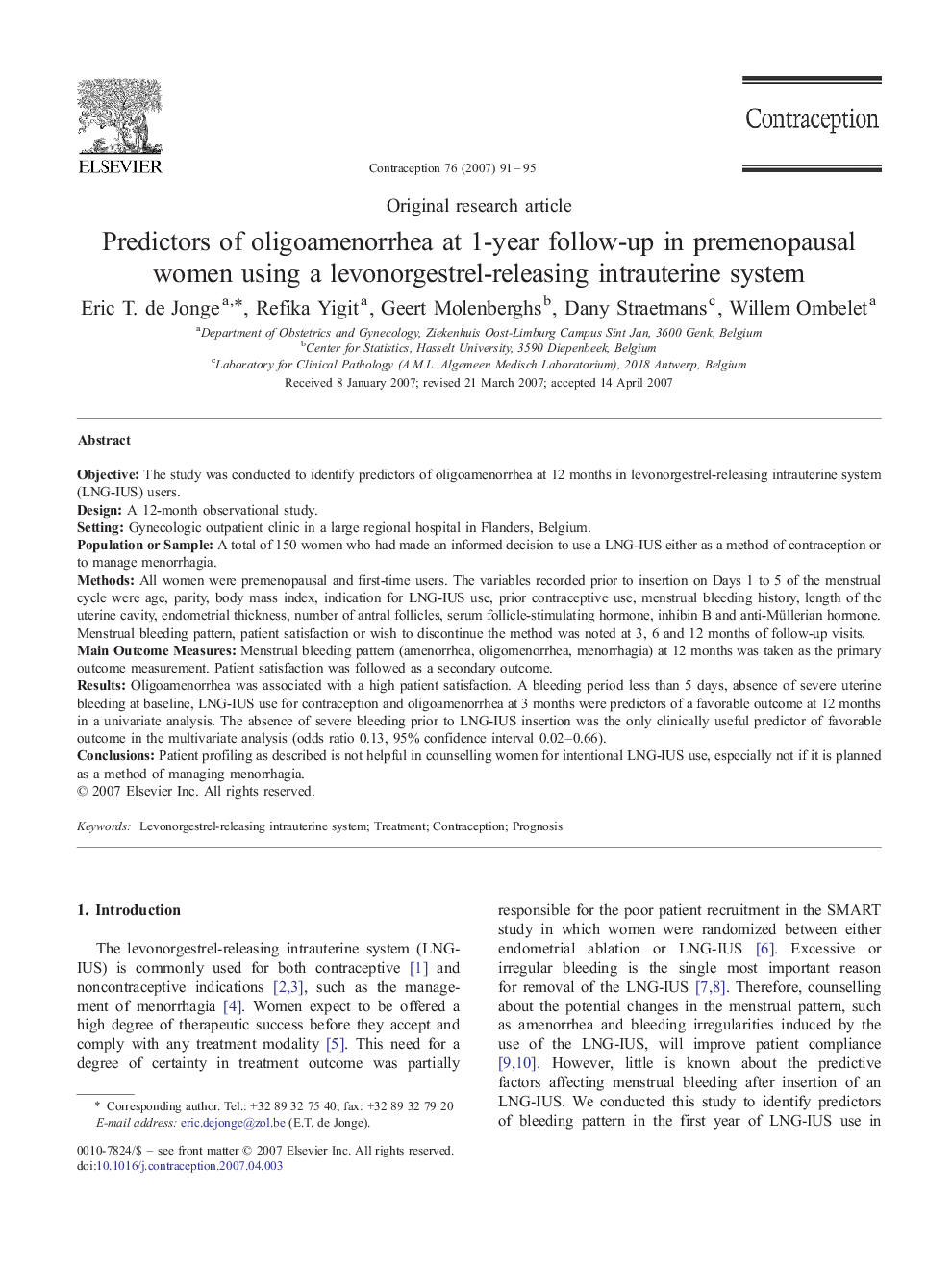| کد مقاله | کد نشریه | سال انتشار | مقاله انگلیسی | نسخه تمام متن |
|---|---|---|---|---|
| 3915787 | 1251521 | 2007 | 5 صفحه PDF | دانلود رایگان |

ObjectiveThe study was conducted to identify predictors of oligoamenorrhea at 12 months in levonorgestrel-releasing intrauterine system (LNG-IUS) users.DesignA 12-month observational study.SettingGynecologic outpatient clinic in a large regional hospital in Flanders, Belgium.Population or SampleA total of 150 women who had made an informed decision to use a LNG-IUS either as a method of contraception or to manage menorrhagia.MethodsAll women were premenopausal and first-time users. The variables recorded prior to insertion on Days 1 to 5 of the menstrual cycle were age, parity, body mass index, indication for LNG-IUS use, prior contraceptive use, menstrual bleeding history, length of the uterine cavity, endometrial thickness, number of antral follicles, serum follicle-stimulating hormone, inhibin B and anti-Müllerian hormone. Menstrual bleeding pattern, patient satisfaction or wish to discontinue the method was noted at 3, 6 and 12 months of follow-up visits.Main Outcome MeasuresMenstrual bleeding pattern (amenorrhea, oligomenorrhea, menorrhagia) at 12 months was taken as the primary outcome measurement. Patient satisfaction was followed as a secondary outcome.ResultsOligoamenorrhea was associated with a high patient satisfaction. A bleeding period less than 5 days, absence of severe uterine bleeding at baseline, LNG-IUS use for contraception and oligoamenorrhea at 3 months were predictors of a favorable outcome at 12 months in a univariate analysis. The absence of severe bleeding prior to LNG-IUS insertion was the only clinically useful predictor of favorable outcome in the multivariate analysis (odds ratio 0.13, 95% confidence interval 0.02–0.66).ConclusionsPatient profiling as described is not helpful in counselling women for intentional LNG-IUS use, especially not if it is planned as a method of managing menorrhagia.
Journal: Contraception - Volume 76, Issue 2, August 2007, Pages 91–95